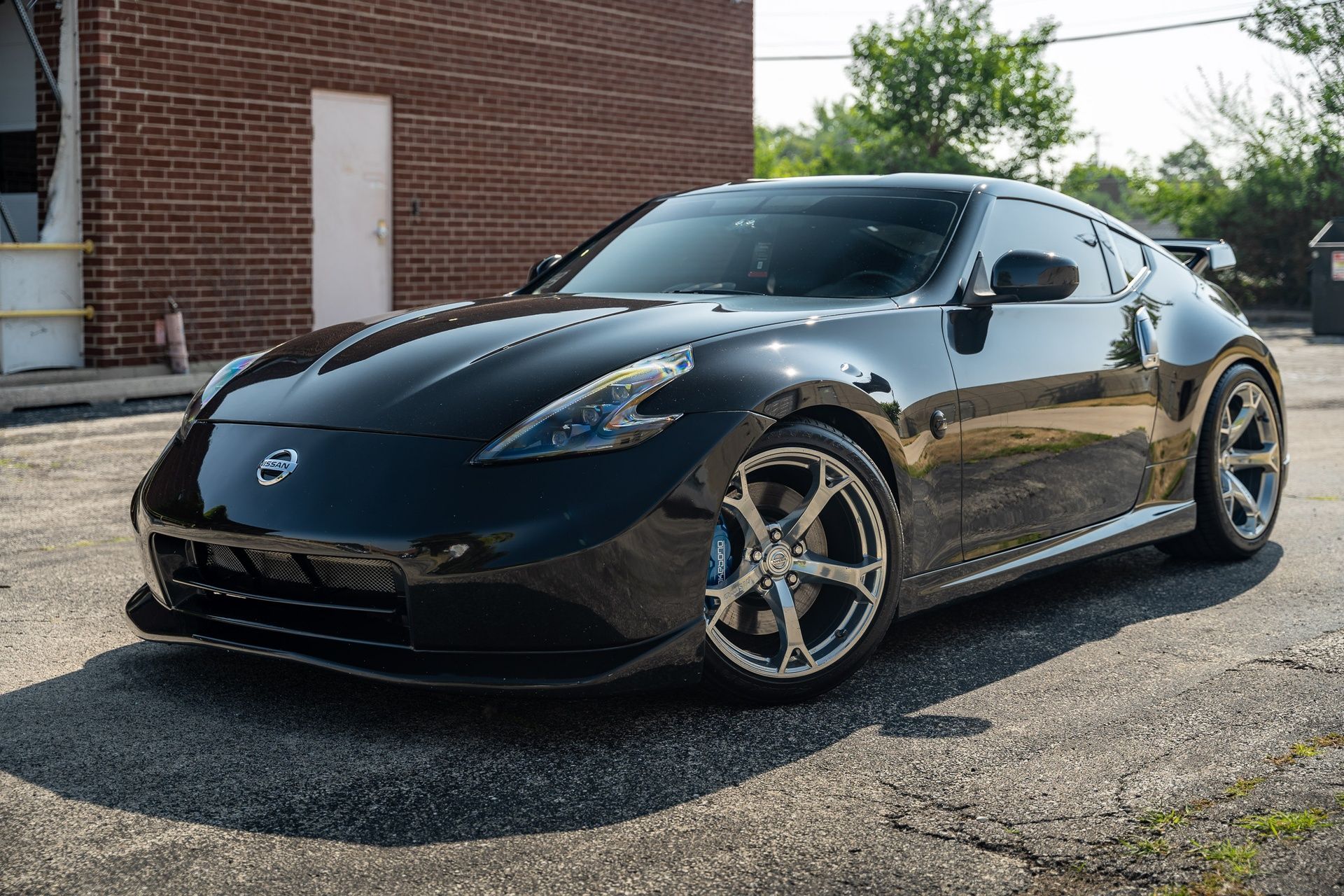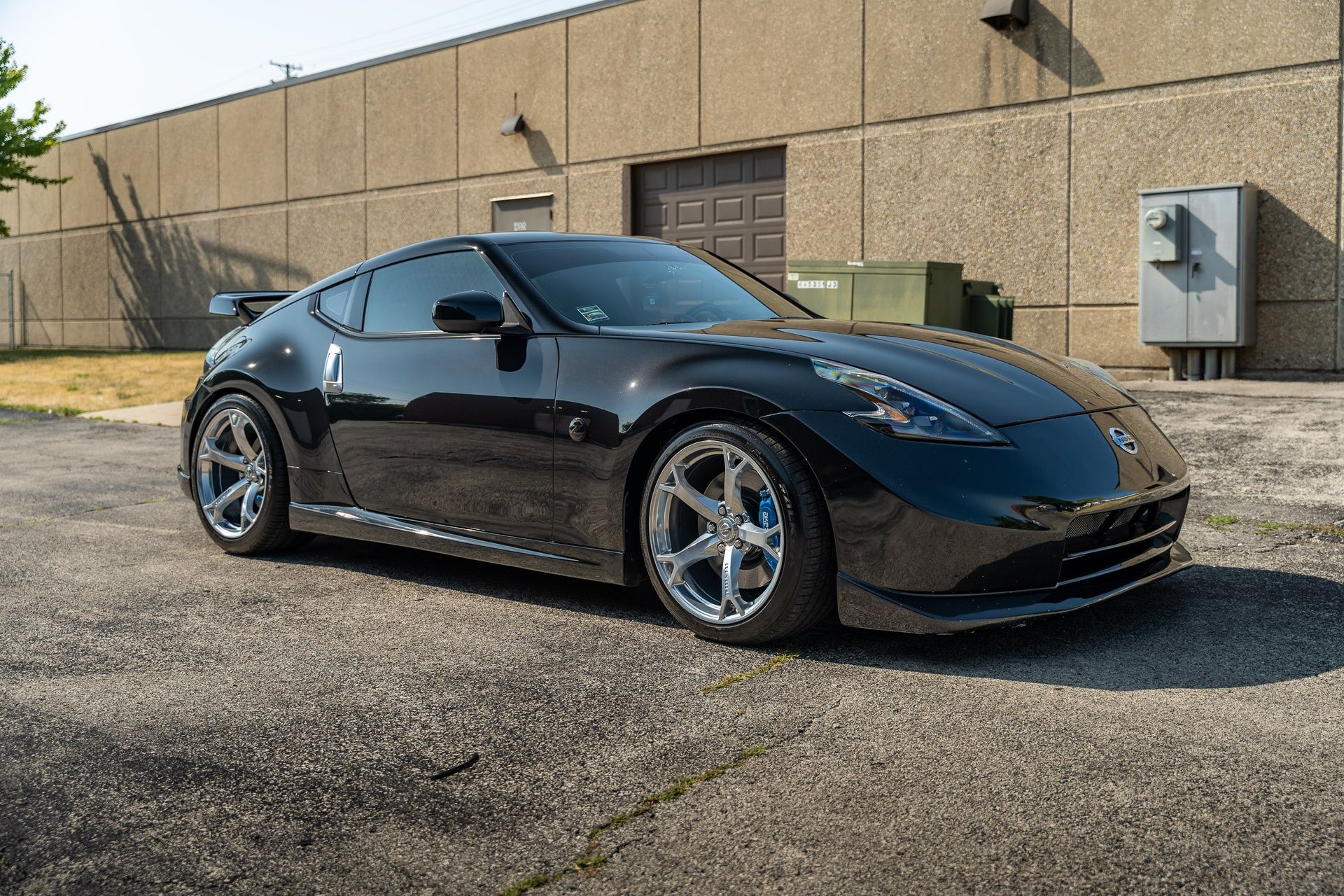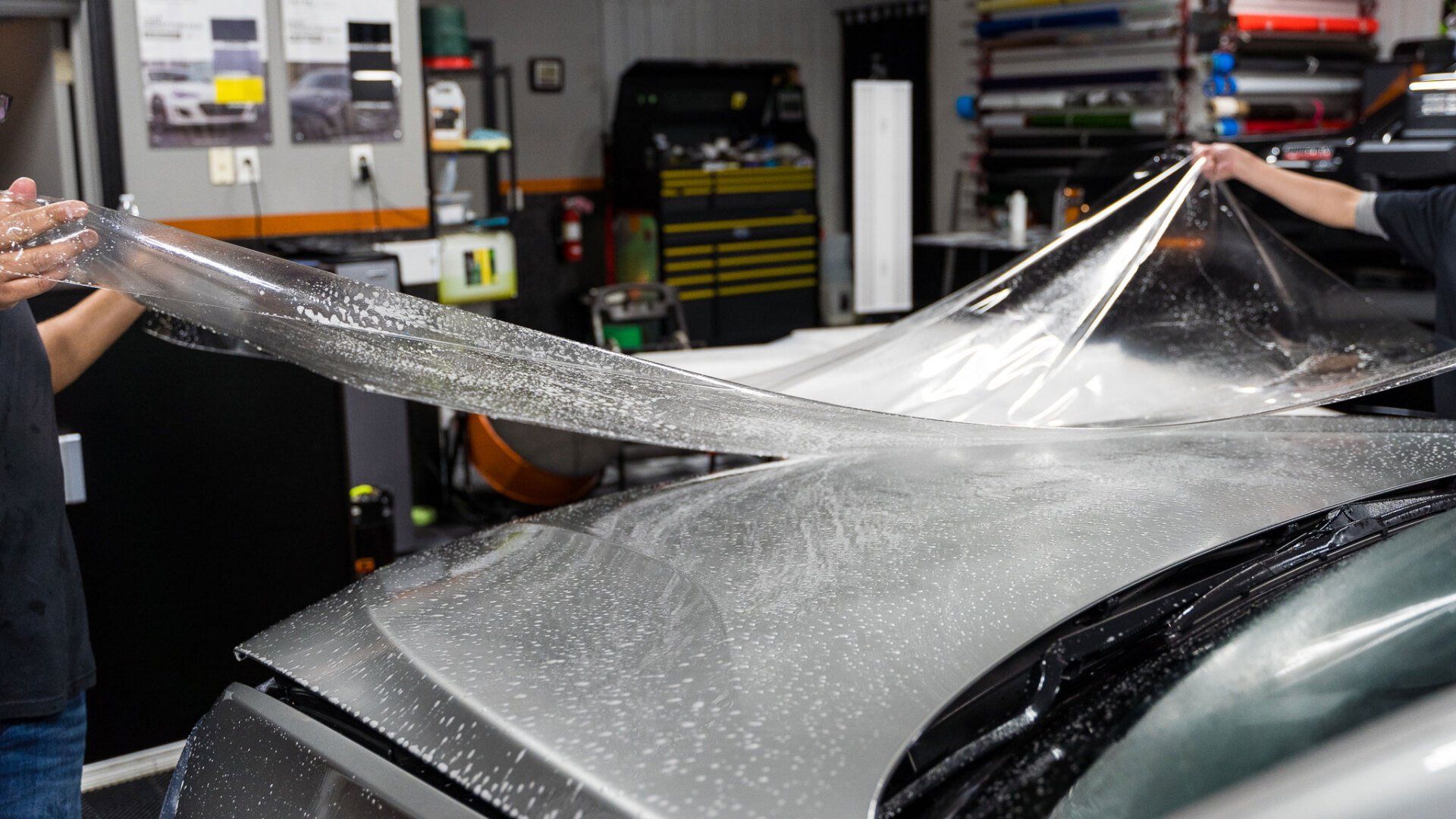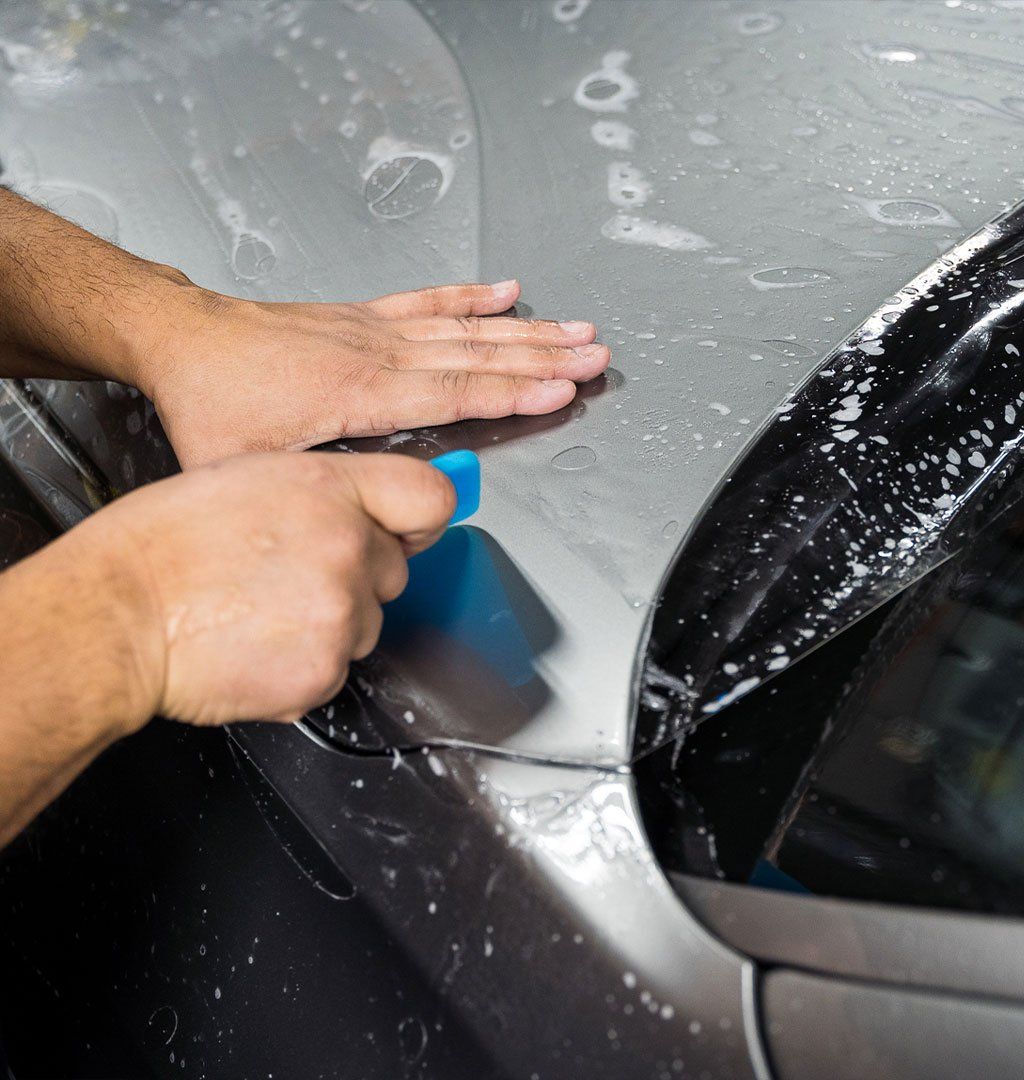Is Paint Protection Film Worth the Investment for Older Vehicles? Pros and Cons Explained
CALL (708) 574-8496
GET A FREE ESTIMATEFor owners of older vehicles, the decision to protect the paint may involve striking a balance between sentimental value and practical investment. Many wonder if applying paint protection film is worthwhile, especially for cars that have already endured years of wear. Yet these vehicles often carry more than just mileage—they hold personal history, memories, and meaning. PPF offers a durable, virtually invisible layer that shields against further damage, helping to preserve both the vehicle’s condition and its emotional value.
The value of applying paint protection film to older vehicles largely depends on the condition of the vehicle's paint and the owner's long-term plans. If the vehicle shows significant wear or damage, such as multiple chips or scratches, it may be more cost-effective to consider other options rather than PPF, which can be a substantial investment; however, if the paint is still in decent shape and you plan to keep the vehicle long-term, PPF can help preserve its appearance and protect against future damage.
Assessing Paint Protection Film for Older Vehicles
The state of your car's paint can heavily influence the effectiveness and value of applying PPF. If your vehicle already exhibits significant imperfections—think chips, scratches, or fading—the investment might not yield the desired protective benefits. This is especially true for older vehicles that may already be struggling to maintain their aesthetic charm. Applying PPF onto a damaged surface could, in some cases, trap those existing imperfections underneath rather than create a flawless finish. In contrast, cars with relatively well-preserved paint surfaces stand to benefit more from PPF. For example, if you own an older model that has been lovingly maintained and still shines brightly, investing in PPF can be a savvy move. It serves as a preventive shield, protecting the underlying paint from future wear and tear. Not only does it safeguard against chips and scratches from road debris, but it can also enhance longevity, keeping that pristine look longer than without the film.
However, there are additional factors to consider beyond just appearance; cost versus value is another important aspect. While the price tag for PPF installation can range anywhere from $1,500 to $3,000, its long-term protection function raises a key question: is this expenditure justified? For high-performance or luxury vehicles often used in demanding conditions like track days, many owners find that the investment balances out with the potential cost of repainting due to damage—which can escalate between $2,500 and $5,000. The math starts to favor those who keep their cars for years and seek to prevent wear from diminishing their vehicle's aesthetic appeal. However, if your budget-friendly older model, such as a Mazda MX-5, already exhibits significant rock chip impact, you may reconsider the application of PPF. Owners in similar situations have concluded that investing in PPF would be less beneficial compared to simply replacing parts like bumpers when necessary.
Each owner needs to weigh these considerations carefully. When evaluating whether to apply PPF to an older vehicle, personal preference is undeniably significant. For some enthusiasts who pride themselves on meticulously maintaining their car's condition, having reliable protection against future issues can be a valuable investment. But for those who see their older drip paint as charming or characterful elements of experience, they may opt out of yet another layer of cost and commitment. As you contemplate whether PPF makes sense for your vehicle, reflect on its current paint condition and your long-term ownership plans. These reflections will help you make an informed decision aligning with your expectations and investment goals.
Benefits of PPF for Aging Cars
The advantages of applying paint protection film on older vehicles are many and significantly enhance the longevity and appearance of a car that may have seen better days. One standout benefit is its ability to extend the paint's longevity. As vehicles age, they're continually exposed to elements like UV rays, harsh weather conditions, and road debris from regular use. These factors can lead to fading, peeling, and scratches, diminishing both the aesthetic appeal and value of your vehicle. PPF acts as a strong shield against such harmful agents, keeping the original paint beneath it well-protected and looking fresh for years to come. Consider how this protective measure doesn't just prevent damage but actively maintains your car's visual allure.
- Maintaining Aesthetic Appeal: The aesthetic appeal of an older vehicle plays a crucial role in its overall value. If you own a classic car, such as a 1967 Ford Mustang or any other vintage model, maintaining that stunning finish can significantly impact your ability to showcase your prized possession or potentially sell it in the future. PPF serves as a guardian against scratches and chips that could mar that iconic exterior. Car enthusiasts understand that preserving the original paint is not merely about looks; it's also about securing value. The longer these classics stay in pristine condition, the more they retain their investment worth. By applying PPF, owners create an environment where their vehicles can continue to shine without fear of wear and tear from everyday challenges.
- Ease of Maintenance: Regular cleaning becomes simpler because dirt and grime have a harder time adhering to a smooth film surface than to untreated paintwork. This means fewer cleaning sessions while still being able to enjoy a glossy finish. For older vehicles that might come with their share of wear, this can be a game changer—preserving aesthetics and making ownership a more enjoyable experience overall.
- Long-Term Cost Efficiency: Investing in PPF translates into potential long-term savings as well. Repairing high-visibility damage like chips or scratches on older vehicles can rack up significant costs over time. With PPF installed, you mitigate those risks upfront and reduce potential expenses associated with repainting or touch-ups caused by inevitable wear and tear. Moreover, some PPFs feature self-healing properties that allow minor scratches to disappear under heat; thus, they help sustain your vehicle’s flawless appearance longer than untreated surfaces would last.
Applying paint protection film for an older vehicle isn’t just about preserving paint—it’s about protecting memories, reducing maintenance stress, and maximizing long-term value. Whether you're driving a well-loved daily commuter or maintaining a cherished classic, PPF provides a reliable layer of defense that helps you enjoy your vehicle without constantly worrying about new imperfections.
Costs and Installation Process
The cost of applying paint protection film can vary based on coverage area, vehicle type, and professional labor. While the upfront investment may seem substantial, it offers long-term value by protecting your vehicle’s finish from damage and reducing future repair costs. A full PPF installation typically ranges from $1,500 to $5,000, depending on the film quality and the complexity of the vehicle’s surfaces. For partial coverage—usually focused on high-impact areas like the front bumper, hood, and mirrors—costs range from $500 to $1,200. In addition to the film itself, professional labor may add approximately $500 to $1,000, depending on location and provider expertise. Professional installation guarantees accuracy, smooth application, and optimal protection, even though do-it-yourself kits are available!
Installation Steps
Installing PPF requires meticulous attention to detail and an understanding of the material's behavior when applied. Typically, here’s how the installation unfolds:
- Washing and Drying of Your Vehicle: This crucial action ensures that no dirt or debris interferes with the adhesion of the film. You wouldn’t want to put a protective layer over something unclean; all those little particles can prevent proper sealing and lead to premature wear.
- Measuring and Cutting The Film: This step involves accurately measuring and cutting the Paint Protection Film to ensure a precise fit for each section of the vehicle. Since every make and model features distinct curves, edges, and panel shapes; a one-size-fits-all approach won’t suffice. Custom measurements are essential for achieving a seamless, professional look and ensuring full coverage of vulnerable areas.
- Application: The final step involves carefully applying the film onto each car part while meticulously working out any air bubbles that might occur during this process. A squeegee often comes into play here—think of it as an artist applying a masterpiece—ensuring each edge adheres seamlessly against the vehicle's body.
Though the cost and process of applying paint protection film may seem detailed, the long-term advantages far outweigh the initial effort. From preserving your vehicle’s appearance to minimizing future maintenance expenses, PPF offers both practical and aesthetic benefits. When installed correctly, it becomes an invisible shield that helps your car look newer for longer—making it a worthwhile investment for any vehicle owner.
Weighing Pros and Cons
Understanding both sides is crucial. On the pro side, protection from further damage stands out. PPF acts as a robust barrier against chips and scratches incurred on the road, especially if you frequently drive in environments with debris. Many enthusiasts swear by this protective layer, noting that it can save their car’s paint job long-term. Additionally, there's undeniable beauty in a treated car; it maintains a shinier, cleaner look, which many vehicle owners cherish. Not just aesthetics, the potential for higher value retention comes into play too. A well-maintained exterior can help your vehicle sell for more when it’s time to upgrade.
While the benefits of paint protection film are impressive, it’s also important to consider a few practical factors before making the investment. PPF installation can be a significant upfront expense, typically ranging from $500 to $2,000 depending on the level of coverage and vehicle size. For some owners—especially those with older vehicles—this may raise questions about overall value. Additionally, like any product exposed to the elements, PPF may require maintenance or eventual replacement due to natural wear, such as yellowing or peeling over time. That said, many find the protection and aesthetic enhancement well worth the cost, particularly when preserving sentimental or high-value vehicles. Ultimately, the decision to apply PPF should align with your vehicle goals, lifestyle, and long-term care plans.
Alternative Options for Paint Protection
If investing in PPF doesn't seem practical, there are other methods to protect your vehicle's paint. One such method is ceramic coatings, which provide a robust barrier against environmental factors. This type of coating is engineered using advanced nanotechnology that bonds with the paint, delivering a strong layer of protection that enhances gloss and repels dirt, grime, and water. These properties keep your car cleaner for longer and reduce the frequency of washing, making it easier to maintain an impeccable appearance. The application of ceramic coatings involves careful preparation of the vehicle’s surface. This process may include thorough washing, clay-bar treatment to eliminate embedded contaminants, and polishing to achieve a smooth, clean finish. Once applied, ceramic coatings offer long-lasting protection—often maintaining their effectiveness for several years. They act as a durable barrier that preserves your vehicle’s gloss and protects against environmental pollutants, UV rays, and chemical contaminants. However, while ceramic coatings enhance surface resilience, they are not a substitute for traditional bodywork repair and won’t prevent damage from more severe impacts.
Regular Waxing
Another practical option to consider is regular waxing. This age-old method holds its ground well in maintaining the aesthetic appeal of older vehicles with delicate paint finishes. High-quality waxes, particularly those made from natural ingredients like Carnauba wax, can create a glossy layer over your paint.
Waxing adds visual depth and shine and offers some protection against UV rays and moisture, which can contribute to fading and corrosion over time. The downside? Waxing typically requires more frequent applications compared to PPF or ceramic coatings. Depending on environmental conditions—such as exposure to sun or road salt—you might be looking at reapplying wax every two to three months. But the process itself can be quite satisfying; there's something gratifying about polishing your vehicle and watching it shine under the sunlight. Through this personally engaged maintenance routine, you develop a stronger bond with your vehicle beyond just its function as transportation. Therefore, before making a decision, consider all available options in the context of your car’s specific condition and your personal preferences. Each method has its unique advantages and drawbacks that can significantly impact how well you protect your investment over time.
In evaluating these alternatives for paint protection, remember that the best choice aligns with both your vehicle's needs and your lifestyle. Protecting your investment ensures that you enjoy your vehicle for many years to come!
Expert PPF Services in Carol Stream, IL
Give your vehicle the protection it deserves with D’Andrea Auto Detailing’s
premier paint protection film services in Carol Stream, IL. Our expert team uses industry-leading PPF to defend your car’s finish against rock chips, road debris, and environmental damage—all while maintaining that showroom gloss. Whether you're driving a new model or a beloved classic, we provide precision installation and lasting protection you can trust. Don’t wait for
scratches to tell their story—schedule your PPF service today and drive with confidence!





